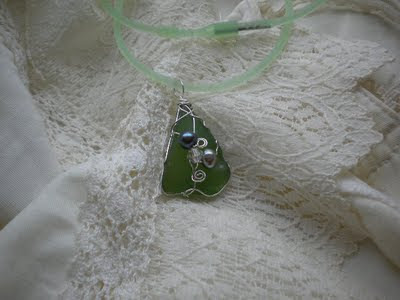 This evening I was amazed at how many fireflies were in my backyard. Usually, in June, I only see a half-dozen or so on any given night, but tonight there were easily dozens floating about, blinking easily, lazily... it was such a beautiful sight!
This evening I was amazed at how many fireflies were in my backyard. Usually, in June, I only see a half-dozen or so on any given night, but tonight there were easily dozens floating about, blinking easily, lazily... it was such a beautiful sight!I sat outside and eventually it became fully dark - it was like watching little UFOs zigging and zagging about in their flights of courtship making the most of their brief lives. This photo belongs to the same web site shown below. Read on!
Source:
http://www.lifeslittlemysteries.com/fireflies-synchronous-flashes-are-booty-calls-study-reveals-0921/
Fireflies' Synchronous Flashes Are 'Booty Calls,' Study Reveals
By Remy Melina, Life's Little Mysteries Staff Writer
08 July 2010
The beautiful, but seemingly random, blinking patterns of fireflies have been decoded. Turns out, it's all about love.
Scientists have been attempting to understand the purpose of large groups of fireflies' mysterious synchronized flashes since the 1930s. A new experiment, the first ever to create a virtual environment for fireflies – using LED lights as artificial males – has revealed how the female firefly's nervous system processes visual signals, as well as the role that male flash synchrony plays in the responsiveness of the female.Fireflies, which use bioluminescence for sexual selection, synchronize the flashing of their neon-green lights as large groups in order to help female fireflies recognize potential mates, according to the findings.
"There have been lots of really good observations and hypotheses about firefly synchrony," said lead author Andrew Moiseff of the University of Connecticut. "But until now, no one has experimentally tested whether synchrony has a function."
Flash flirting
Flashing together makes it easier for members of the species of Photinus carolinus fireflies to locate appropriate partners for mating, the study found. In firefly mating rituals, the males cruise by, flying around and flashing their signals to let the ladies know that they are looking for love.
Meanwhile, female fireflies wait in the leaves, observing the males’ flashes. Each waits for a specific pattern of blinking light – sequences are unique to each species. When they spot a pattern that they like, they flash the same signal back at the male as an invitation to come on over.
Scientists estimate that, of the roughly 2,000 species of fireflies around the world, only about 1 percent synchronize their flashes in large groups. However, flashing Photinus fireflies are very common, especially in North America. They evolved to flash in synchronizing patterns as a solution to specific behavioral, environmental or physiological conditions, said Moiseff.
A group effort
Also known lightning bugs, fireflies are very goal-oriented: after living underground as larvae for about two years before emerging, Photinus fireflies spend their brief, two-week-long adult lives courting and mating. In fact, they are so dedicated to finding a mate and reproducing that they don't even stop to eat.
With literally only one thing on their minds, and in the midst of fierce competition over female attention, why do male fireflies partake in synchronized flashing as a large group?
Synchronous species of fireflies are often found in high densities, making it hard for female fireflies to see and register a lone male firefly's signal. This suggests that there is a problem in the female's information processing, which group synchronized flashing seems to compensate for, according to the study.
By flashing the same pattern simultaneously, male fireflies are sending out a clear, unified declaration of their species to the females, Moiseff said. Using LED lights, researchers tested this hypothesis on female fireflies, noting that they responded to flashes in perfect or near perfect unison more than 80 percent of the time.
The bug bachelorette
But once a female sees the mass synchronized signal and responds, how does she decide who in the group is to be her paramour?
"In the field, under natural conditions, we find that a responding female Photinus carolinus attracted several males," Moiseff told Life's Little Mysteries. "These males then cluster around her and interact among each other, as well as with the female."
Researchers do not know whether the female's initial response is directed at a single male within the synchronous group, or whether she is responding nonspecifically to the group as a whole. But because her response flash attracts many males, it appears that she isn't communicating with any individual male, Moiseff said.
"Ultimately, however, she selected a single male to mate with," Moiseff added. "The effect of this is that female choice is occurring separately from initial species recognition and attraction."
I never could have thought of it,
To have a little bug all lit
And made to go on wings.
~Elizabeth Madox Roberts, "Firefly"
Turns out, many of us are nostalgic about running and catching fireflies in our youth. Go ahead, find the fireflies and you will find your own light ~ Good Night!














